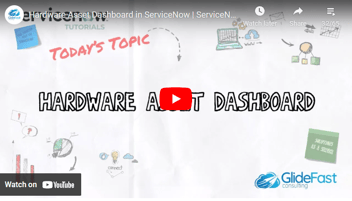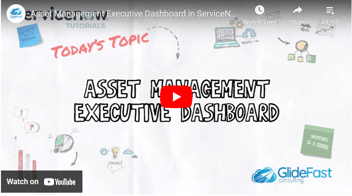Introduction to CMDB Health Dashboards
By: GlideFast
| 3 minute read |With Vlad Tohaneanu
In this article, you will learn about the Configuration Management Database (CMDB) health dashboard in ServiceNow and how to use health inclusion rules to tailor what CIs would have compliance checks done on them.
The Four KPIs
To access the health dashboard, navigate to configuration CMDB dashboard > CMDB view. The health of the CMDB data is monitored and reported on four major KPIs. The overall health score we see here consists of three of those four KIPs — completeness, compliance, and correctness.
The CMDB Completeness Scorecard checks if the recommended and required fields are populated; it's important to note that with the out-of-the-box deployment there are no recommended fields that are configured. The CMDB Compliance Scorecard records the results of CMV audit runs. An audit compares actual values against expected values that are defined in a template.
The CMDB Correctness Scorecard checks if the CMDB data is outdated, if there are any duplicate CIs, or if CIs are labeled asorphan. Duplicate CIs are CIs that cannot be uniquely identified; an example of this is two servers that have the same serial number. An orphan CI is a CI that was unintentionally left in the CMDB when it is no longer needed; an example of this is a database CI without a relationship to a server. Staleness measures if a CI is stale or outdated, which means that CI's have not been updated within a specified time period.
The fourth group of KPIs, part of the health dashboard, is the relationship health, which is in a separate tab as shown in the demo. The CMDB CI Relationship Scorecard keeps track of duplicate, orphan, and stale relationships.
Narrowing the Scope of CIs
Let's navigate back to the main health dashboard. The results presented in the health dashboard can get overwhelming with time, based on CIs coming from Discovery and from other sources. We can narrow the scope of the CIs included in this dashboard by using health inclusion rules. In the out-of-the-box deployment, there are no predefined health inclusion rules, meaning all CIs are shown in this dashboard. It's important to note that these inclusion rules do get inherited by child classes, so it's important to understand that setting these rules can remove more results than you might expect.
Let's take a quick look at the duplicate CIs within the CMDB Correctness Dashboard. Let's say we want to use health inclusion rules to exclude the printer CI from being shown under duplicate CI. We can do that by going to the CI class manager and locating our printer CI first. Notice there is a health module here; we expand that and there are our health inclusion rules.
In this example, there are no rules that are set up, so what we're going to do here is set up a condition that says name is empty. We're going to apply that to the duplicate metric because that's where this information is displayed. Essentially, this condition is saying show me all printers where name is empty, which would mean none of them. We’re going to save this condition and go back to the dashboard and verify the results.
Verifying the Results
After creating that rule, we must rerun the scheduled job that refreshes those specific health metrics, and in this case, it will be the correctness job. Let’s dive into that and click Execute Now; essentially now it's refreshing the CMDB Correctness Scorecard. All health results that are generated for the health dashboard are generated by these five scheduled jobs. It's important to note that out-of-the-box, these jobs are disabled, so if you want your health dashboard to display any information you will need to set those to active. Going back to the main health dashboard, we will see the CMDB CI computer printers are now excluded. In addition to any health inclusion rules, identification inclusion rules also indirectly impact what appears in the CMDB health dashboard.
Did you find this introduction to CMDB Health Dashboards in ServiceNow helpful? Are you ready to start your journey with ServiceNow? If you want to find out more information about GlideFast Consulting and our ServiceNow implementation services, you can reach out to us here.
About GlideFast Consulting
GlideFast is a ServiceNow Elite Partner and professional services firm that provides tailored solutions and professional services for ServiceNow implementations, integrations, managed support services, application development, and training. Reach out to our team here.



